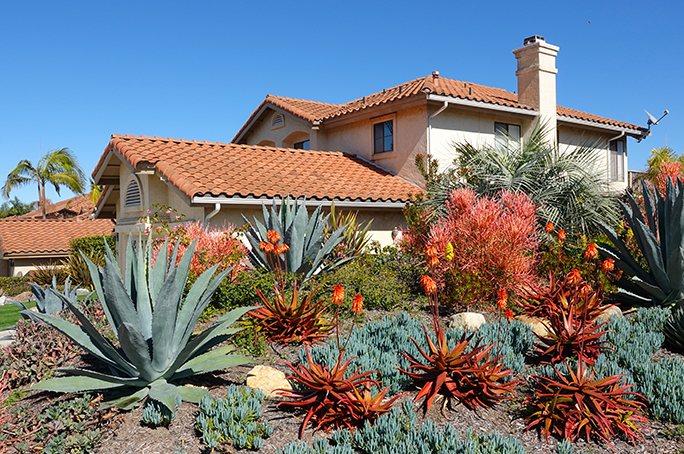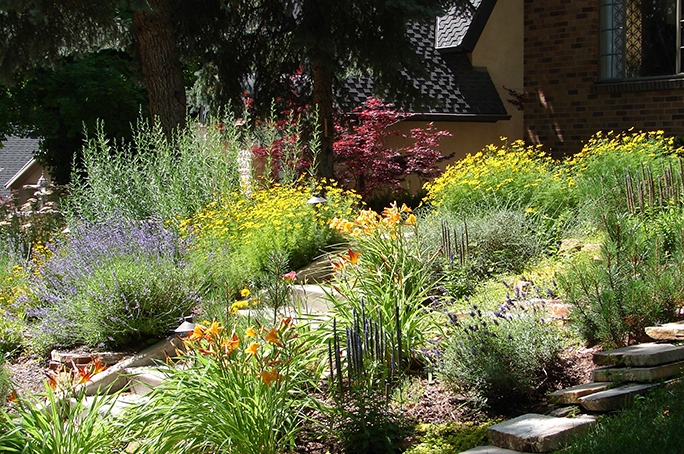Ready to ditch the high-maintenance, water-guzzling garden and still have a stunning outdoor space?
Say hello to xeriscaping—a smart way to design your yard to save water without giving up on style! Whether you’re dealing with a hot climate or just want a low-maintenance garden, xeriscaping offers a fresh approach to landscaping that’s both beautiful and sustainable.
Why Go Dry?

Let’s be real—keeping a traditional lawn or garden alive often means constant watering, especially in hot or dry areas. That’s why xeriscaping offers a different approach. The term comes from the Greek word “xeros,” meaning dry, which reflects its focus on landscaping that thrives with minimal water by working with nature instead of against it.
Beyond saving water, xeriscaping saves you time on maintenance. Less mowing, less fertilizing, and fewer pests mean more time spent relaxing in your garden instead of working on it. Plus, by planting native and drought-tolerant species, you support local wildlife and give pollinators like bees and butterflies a helping hand.
How to Start

Starting your xeriscape garden is easier than you might think—just go for plants that are known for thriving in dry soil and are local to the climate. Here are some top picks to consider:
- Succulents and cacti: These plants are powerhouses that store water in their thick leaves. There are hundreds to choose from, but Agave, Opuntia, Echeveria, and Aloe species are particularly well-suited to sunny, arid environments.
- English lavender: Lavandula angustifolia is a popular sun-loving herb that will offer you beauty and a delightful scent.
- Rosemary: This hardy herb loves the sun and dry soil, and is perfect for xeriscaping while adding culinary value to your kitchen.
- Blue fescue: This ornamental grass is known for its striking blue hue and compact size, making it ideal for borders or containers.
- The blanket flower: With its bright, daisy-like blooms, Gaillardia adds a pop of color to the garden and thrives in dry conditions.
- Yarrow: Hardy and drought-tolerant, Achillea millefolium has tiny flowers that come in all sorts of colors and attract pollinators.
When it comes to planting your chosen plants, try to group them together by their watering needs so you won’t accidentally drown some while leaving others thirsty. Keep in mind that xeriscaping isn’t just plants—use rocks, gravel, and patios to add cool texture without requiring a drop of water.
Maintaining Your Garden

Once your xeriscape garden is up and running, maintenance is easy—but a little care goes a long way. Start by keeping an eye on your soil; well-drained soil is key to healthy plants. If needed, try a cozy blanket of mulch that will maintain moisture and keep weeds at bay.
When it’s time to water, drip irrigation and soaker hoses are your helpers—they deliver water straight to the roots, so nothing gets wasted. If you prefer to water manually, then remember it’s all about quality over quantity. Instead of frequent shallow watering, water your plants thoroughly so their roots get fully soaked. Once established, most of these plants can survive on rainfall alone.
While xeriscaping cuts down on yard work, your plants still appreciate occasional pruning to keep their shape neat and encourage fresh blooms. These little touches help your garden look tidy and vibrant throughout the seasons.
With just a bit of love and attention, your xeriscape garden will reward you with beauty and resilience—saving water and turning your outdoor space into a peaceful, colorful retreat. So gear up and impress your neighbors with a garden that’s tough, beautiful, and ready to take on the heat.
